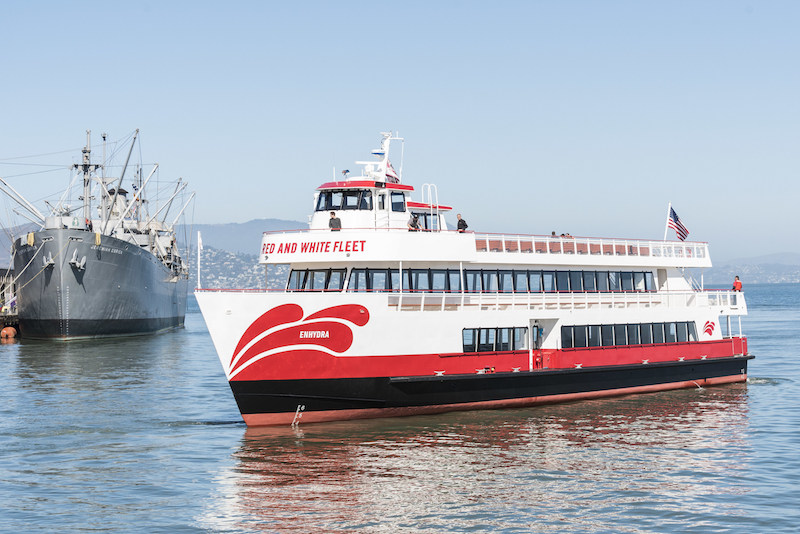As I was putting the November issue of WorkBoat to bed, I realized that the main feature stories were all related to new technology that could affect the industry’s future.
Our cover story takes a look at the Enhydra, the new lithium-ion battery hybrid ferry that recently entered service in San Francisco and one of our Significant Boats of 2018. According to Red and White Fleet, the ferry is intended to show the world that greener options exist for powering commercial vessels, specifically without internal combustion engines and with batteries.
“This boat will be completely electric as soon as we can get there,” said owner and president Tom Escher. “We’re not 100 percent there yet, but we’re getting there because this is what we have to do if we want to be responsible people on the planet.”
The boat’s propulsion is currently “plug-in hybrid diesel-electric,” but within a few years, Red and White intends to operate the vessel on batteries only. Either the existing Corvus lithium-ion batteries will be replaced with more powerful models or additional batteries will be added, or both, sufficient to operate all the vessel’s systems, from propulsion to house load.
In the November issue we also discuss autonomous technology. Sea Machines, a Boston-based company, has been working since 2015 to develop the technology that’s purpose-built for workboats including patrol craft and ferries. The company has “a standardized platform that can be used in as many types of vessels as possible.”
This sounds like bad news for mariners, but advocates for autonomous technology say the goal is not to eliminate mariners, but to use the technology for mundane, routine tasks that frees up people for more demanding tasks. In some critical missions like security and fireboats, it can reduce the dangers to personnel.
We also take a look at drones, which are new to the workboat market, in November's coverage. Drones offer operators new opportunities. Besides search and rescue missions, drones can map out the origin and extent of oil spills, perform oceanographic surveys, and provide aerial imagery of vessels and barges that otherwise would have to be boarded.
All of these technologies are potential game changers for our industry.




